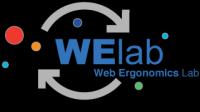Inproceedings,
Web evolution and its importance for supporting research arguments in Web accessibility
Proceedings of the First International Workshop on Understanding Web Evolution (WebEvolve2008): A prerequisite for Web Science., page 51-54. Southampton, UK, Web Science Research Initiative, (April 2008)
Abstract
The World Wide Web (Web) is in constant evolutionary change. This evolution occurs along many fronts and is led by infrastructure developers, Web designers, technologists, and users. These multiple stake-holders ensure that the Web is a heterogeneous entity, not just in the nature of the content, but in the technology and agents used to deliver and render that content. It is precisely this heterogeneity which gives the Web its strength and its weakness. A weakness in technology adoption leading to an increasing disconnect between the actual user experience and the expected experience of the technology stakeholders. We are interested in the human factors surrounding the evolution of the Web interface; and believe that the wait is always too long for new recommendations, guidelines, and technology to be adopted. We are therefore, currently focusing on technological interventions for the client-side experience as opposed to waiting for guidelines or core technology adoption. But our beliefs are nothing more than anecdotal, to accurately target our work we need to understand the way the Web evolves. In this paper we do not present any solid research evidence but wish to explain our rationale and methodology (our position), and expose this to comment and criticism from the research community. Therefore this paper presents the 'why and how', as opposed to the 'what'
